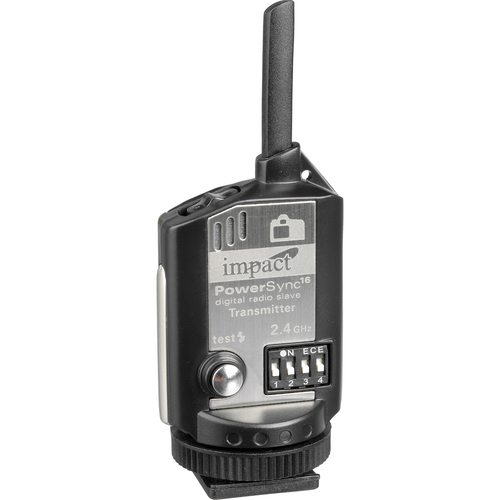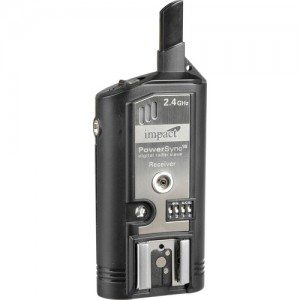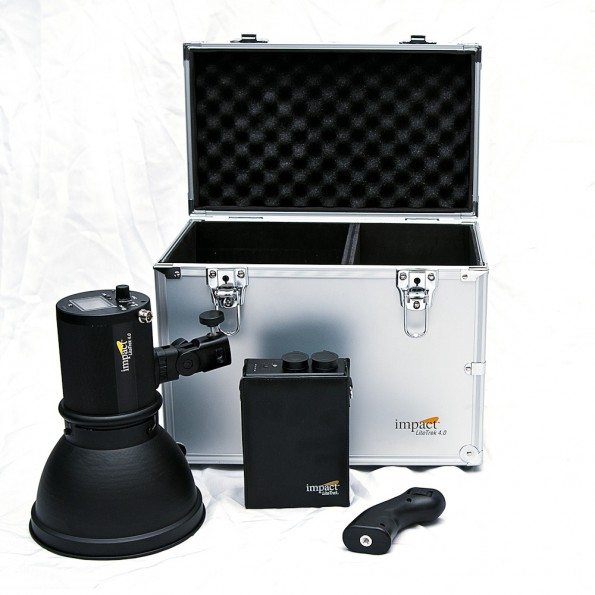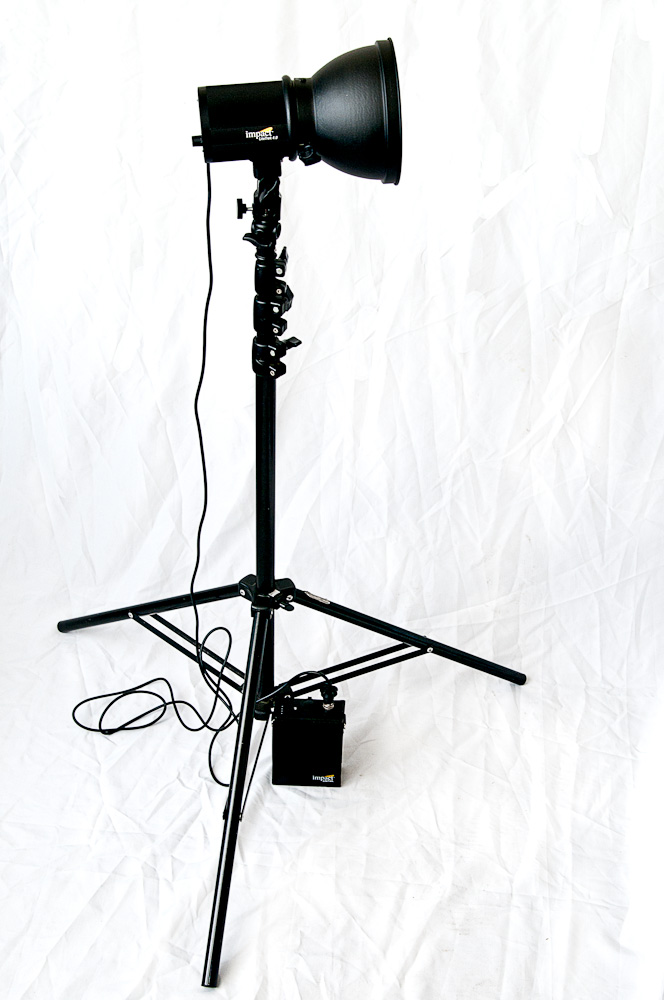
I love light. Without it, we can’t create photographs. The more light we have available to us and the better we can control it the greater the possibilities to express ourselves through our photos. Because of this I became a studio photographer. However, studios become boring unless you can build complex sets or have the budgets to hire people to. Sometimes I mix it up with location shoots, but the problem there is that I lose a lot of the control of light that I enjoy in the studio. Can I have both?
Portable studio lighting is the solution for this. This generally consists of a power supply with a battery and at least one light. The problem is these are usually prohibitively expensive, large and heavy. With that in mind today I’m going to begin testing the Impact LiteTrek 4.0 Monolight and (LT) Power Pack Kit. This kit addresses all of these issues – Retailing under $1,000, weighing in at 5.5 pounds and all fitting in a case that’s 14.5 x 11 x 8.5″ it’s affordable, lightweight and compact. Can it do the job? Let’s find out.
The Kit consists of a Mini LT Power Pack, a LiteTrek 4.0 Monolight, cables to connect it all together and a case to carry it all in. For my tests I will also be using the Impact PowerSync Radio Slaves, the Impact CKE Nikon Flash Cable which connects the power pack to my flash and a variety of light modifiers which I’ll talk about as I use them.
Impact PowerSync 16

The first thing I opened was the wireless transmitter and receiver. The transmitter is tiny – and I mean really tiny. This is really nice as it keeps my kit smaller. I’m a little worried about it being fragile but it appears to be built well for its size. It has a power switch on the top, a light indicator, a test button and some dip switches. It can mount to a flash shoe and has a 16mm port with a cable.

The receiver is a bit bigger and has a hotshoe on the top and a thread on the bottom to mount it on a tripod or a stand that has a threaded head. It also comes with several other useful attachments and cables so you’re pretty set out of the box however you want to use it.
Chris did a hands-on with these already if you want to take a look.
On to the kit

Next I took a look at the light kit. It comes in a nice aluminum case with built in locks. The locks are more for appearance than for security as the keys are not coded and on this one don’t even actually lock the case. It’s also not heavily enough padded on the inside for extreme conditions. For most situations this will be a great case and I always appreciate kits that come with them, but if your needs are demanding you’ll want to get something more robust. On a plus side there is enough spare room for the wireless, extra cables and my flash.
The power pack is pretty simple with two ports on the top for A and B lights. They have different inputs – one is designed for the monolight and the other for a flash. However the kit comes with cables to attach the monolight into either port – I’m not sure if this means you can use it with two monolights or not as I am only working with the one the kit comes with. There is also an on/off button and a battery level indicator. The battery locks on and off easily but securely if you have multiple batteries, and there is a port on the battery to charge it. The whole thing slides into a padded carrying case with a belt loop and D-rings for a shoulder strap. There’s a hole in the back of the case to allow access to the battery charger but in this one it doesn’t line up perfectly so when I tried to plug it in to charge it the charger couldn’t figure out if it was charged or not. I removed the pack from the case and plugged it in and now it’s charging fine. While it charges I’ll take a look at the monolight.
The monolight is small, lightweight and sturdy. It comes with a 7″ reflector and two different mounts. One mounts to a stand and includes an umbrella mount. The other is a handle for hand-held use by an assistant. The handle also has a tripod mount on the bottom so if you have a tripod but no light stand you can still mount your light this way. Smart. On the back is a digital readout. Operation of the light is straight forward and easy to master. It does not appear to be fan-cooled so I’ll pay attention to heat as I use it more.
Initial Tests
With the battery charged I did a few tests – just quick operational tests before I take it out on the road so I don’t have any good samples to show yet, but here are my initial findings.
The battery pack does not turn on unless there is a light plugged into it, which is a great safety feature as well as a battery saver. The monolight plugged into the pack recharges pretty quickly – faster when at lower power levels as expected. It beeps when charged so no need to time it in your head or get underexposed images because shooting too quickly. The modeling light only turns on when you press the button on the rear controls and only stays on for 10 seconds to conserve battery power. I do wish you could configure that as there are times I would choose to sacrifice battery life for constant modeling. I also noticed that in order to use an umbrella the reflector has to be removed, a sacrifice I’m sure they made in order to keep the unit small. I’ll have to remember to test for spill issues later. The last thing I noticed is that unlike most strobes I’ve worked with, this one doesn’t discharge when powered down. This is a bit of a concern as that means the built-up power remains in the head.
Switching to my Nikon flash in the power pack was a real surprise. If you do enough location work to already own an external battery for your flash this may not be news to you, but I was pleased to find recharge is instant. Well certainly not instant, but fast enough to put my camera on continuous high speed and the flash kept up just fine. You could do some interesting series with that for sure.
As my final test I hooked up the wireless triggers and both the monolight and the flash to the power pack. This went seamlessly. I can attach the receiver to either the flash or the monolight and the other triggers as a slave (make sure to turn the slave option on the monolight or your flash on as necessary). The remotes functioned without a problem over a great distance and through several walls, an extreme real-life situation.
In summary, all the important features are here as well as some extras that are particularly useful on location. The few complaints I have are minor ones that can easily be worked around and shouldn’t impact its’ viability. I look forward to testing this in the field.
Please Support The Phoblographer
We love to bring you guys the latest and greatest news and gear related stuff. However, we can’t keep doing that unless we have your continued support. If you would like to purchase any of the items mentioned, please do so by clicking our links first and then purchasing the items as we then get a small portion of the sale to help run the website.


